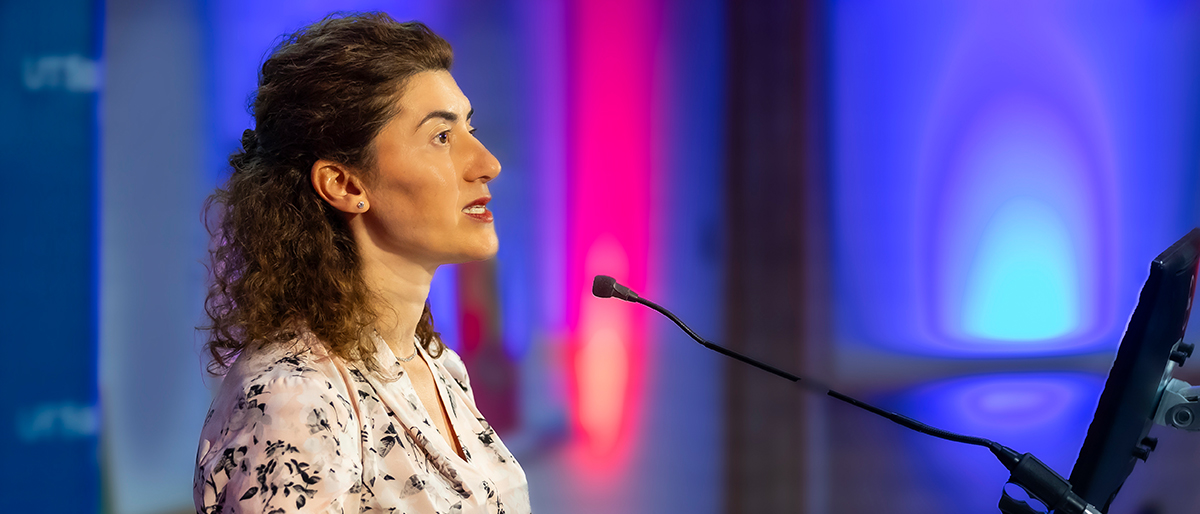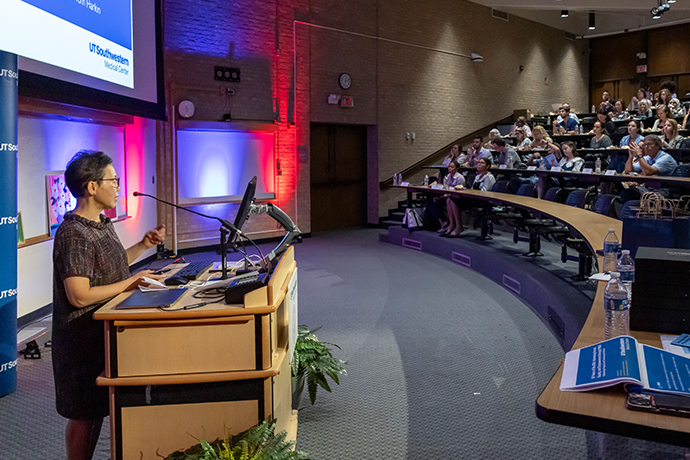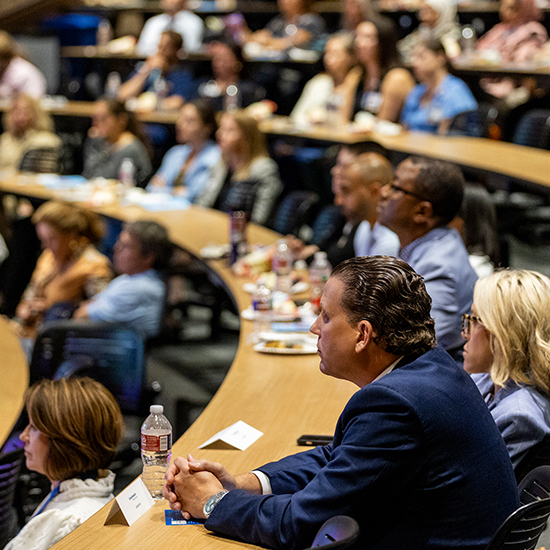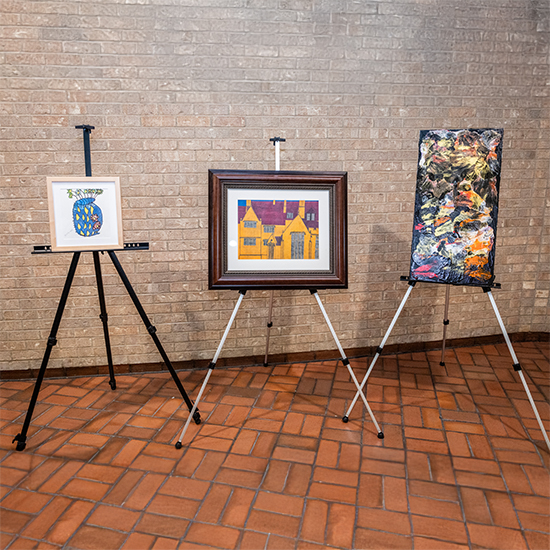Shaping a future where all belong: UTSW celebrates the Americans with Disabilities Act

“As we celebrate the legacy of the Americans with Disabilities Act (ADA), remember that progress is possible when we all work together to shape a future where every mind belongs and every possibility is within reach,” keynote speaker Maria Chahrour, Ph.D., Associate Professor of Neuroscience and Psychiatry in the Eugene McDermott Center for Human Growth and Development, told those attending UT Southwestern’s celebration honoring ADA’s 35th anniversary.
In her presentation, “From Genes to Possibilities: How Science Shapes the Future for Neurodiverse Communities,” Dr. Chahrour spoke about autism and related neurodevelopmental conditions, discussing how science and genetics can empower communities.

She discussed neurodiversity – the idea that differences in how human brains function, process, and interact with the world in conditions like autism – are natural and valuable. Dr. Chahrour said this term helps reframe how disorders are described and creates language that recognizes the strength in our differences.
“When we embrace neurodiversity, we see the value in all minds, not just those that fit a narrow definition of normal,” she said. “There is no right way of thinking, learning, or behaving, and differences can be enriching when they are not viewed as deficits.”

Dr. Chahrour’s Lab focuses on identifying autism genes, uncovering their regulatory mechanisms, and studying their functions in the brain. Her lab also explores how human genetics relate to individual traits, with a goal to utilize this knowledge to improve diagnostics and design targeted therapies for autism. With up to 90% of autism cases attributed to genetic factors, she shared how understanding genetics impacts care.
“As advances in genetics help us understand each person’s genetic makeup, we can use that knowledge to tailor personalized interventions, therapies, educational support, and treatments. It moves us away from treatments that are one-size-fits-all and toward finding what specifically works for each person,” she said. “These insights also help identify neurodevelopmental differences sooner, enabling earlier, more accurate diagnoses and interventions to improve health outcomes and quality of life.”
Collaborating with colleagues and the community, Dr. Chahrour has led studies including over 3,000 participants across the autism spectrum. She emphasized the importance of uniting to make a difference, which helps ensure representation of all communities.

“The best science happens in partnership with neurodiverse individuals to make sure that our research is inclusive, equitable, and respectful of their identities,” she said. “The future is shaped not only by science, but by the voices of those who’ve had that lived experience.”
Hosted by the Office for Institutional Opportunity, the event included a light lunch catered by Hugs Café, a nonprofit dedicated to providing meaningful training and employment opportunities for adults with disabilities.
Heakyung Kim, M.D., Chair and Professor of Physical Medicine & Rehabilitation, also spoke at the event about UTSW’s Physical Medicine & Rehabilitation Department (PM&R), which this year marks its 70-year anniversary. PM&R physicians, also known as physiatrists, treat individuals with physical, cognitive, and communication disabilities, focusing on restoring function, preventing disabilities, and managing and treating diseases to improve quality of life.
“We don’t just treat conditions, we restore lives,” Dr. Kim said.
The gathering concluded with a presentation and artwork display by Creation Studio, an art studio and gallery for adults with disabilities. The group’s mission is to empower adults with disabilities to become working artists and share their creations with the community.
Endowed Title
Dr. Kim holds the Kimberly-Clark Distinguished Chair in Mobility Research.

